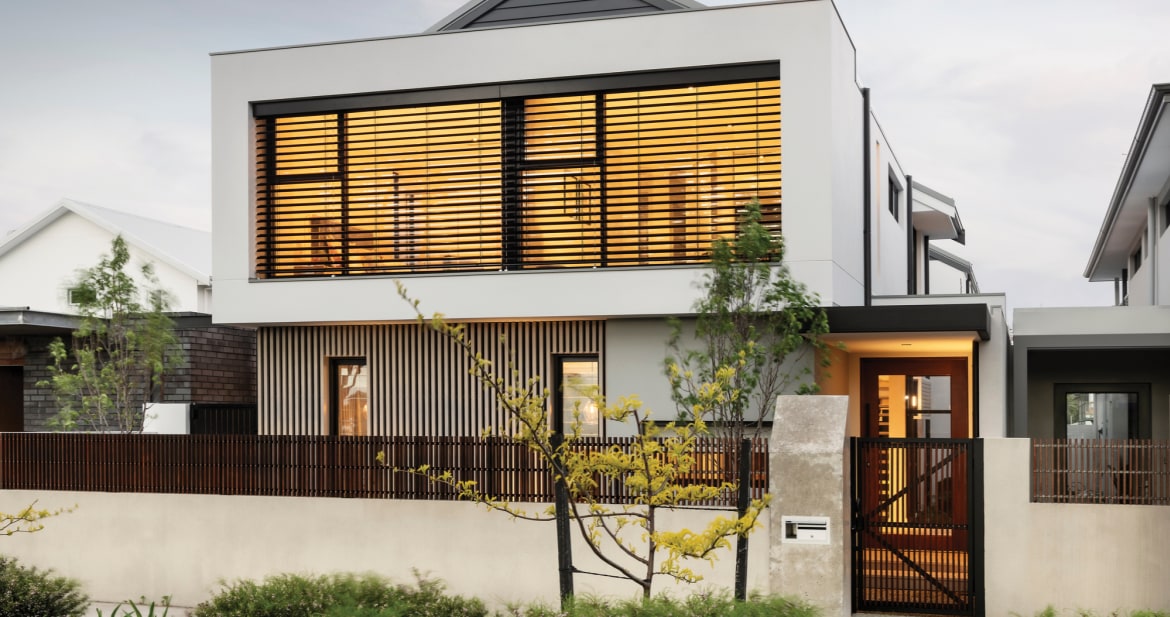Building a custom home costs a considerable amount of money so you want to make sure you make the most of your investment. That’s why being mindful about the future during the design process is important –your choices now will serve you later.
Future-proofing your investment isn’t just about being financially savvy. You may live in the house for forever and never sell, but your needs will likely change as you get older. So future-proofing is as much about planning for your lifestyle later on in life as looking after your bank account.
So how can you future-proof your home? Here are three ways to maximise your investment and create a custom home design with longevity in mind.
Make energy efficiency a priority
Energy efficiency is by no means a new concept, but it’s become more of a priority in recent years. And isn’t just about looking after the environment, either. Energy efficiency can save occupants thousands on power bills, which makes your property more desirable for buyers in the future.
But how do you make your home energy efficient? Buyers look to the Nationwide House Energy Rating Scheme (NatHERS) energy-efficient star ratings to judge a home’s environmental integrity. How does the star rating work? Ratings measure factors including design, construction and climate. Basically, the less energy to keep a home comfortable, the higher the star rating.
According to the National Construction Code (NCC), a home now requires a rating of 6, but custom home builders now aim for a higher star rating because they know it will boost their clients’ investment.
How can you boost your star rating? Your custom builder will be well-versed in complying with the NCC. You can also consult with a NatHERS Accredited Assessor in the home design phase to get guidance on boosting your rating.
Factors that affect energy efficiency:
- Orientation of building
- Building materials
- Insulation
- Window glazing
Suss out smart technology
Check your home security while you’re at work, close the blinds with a click of your phone, and switch the lights off with the sound of your voice. Smart home automation is certainly trendy (how many times have you heard ‘Okay, Google’ in the last year?), but it will be the standard soon so it should be on your radar when you’re building.
But with technology rapidly changing what may be cutting-edge today will be passé tomorrow. Although you can’t control technological progress, you can make your home compatible with it. How? Opt for a smart wiring system. Smart wiring organises all electrical wires onto one platform, making it easier for homeowners to integrate smart appliances.
Installing smart technologies is also a good idea. Install smart security, lighting, heating and garage rollers so these can be controlled virtually. Smart features will make your investment more desirable to buyers in the future.

Design for versatility
Desirable homes are not always the ones with the most exciting features, they’re spaces that suit people of different ages, abilities and lifestyles. As custom home builders, we’re all for innovative design trends in our custom homes, but we also know the value of versatility.
Making your home more accessible ensures people of all abilities can use the space. Not sure where to start? It’s helpful to think about livable, adaptable and accessible homes, as explained by the Australian Government.
- Liveable home: Meets the evolving needs of occupants over a lifetime and follows the Liveable Housing Australia guidelines.
- Adaptable home: A liveable home that also meets Australian Standard AS4299-1995 Adaptable housing, which means it can be customised to be accessible for wheelchair users.
- Accessible home: Australian Standard AS 1428.1-2009 Design for access and mobility.
Tips for making your home more accessible:
- Single-storey floorplan
- Wide doorways to allow for wheelchairs
- Easy-to-access appliances
- Bathrooms walls reinforced to cater for rails if necessary
- Large bedroom and living space on ground level to accommodate a person with a wheelchair
- Large shower for wheel-in access
- Lever-style door handles (not round ones)
- No steps at front door
- Granny flat at the back for ageing family members
Planning for the future will help you build a custom home with longevity and make the most of your investment.
Want to future-proof your investment? We’re a luxury home builder that can help – Get in touch.




